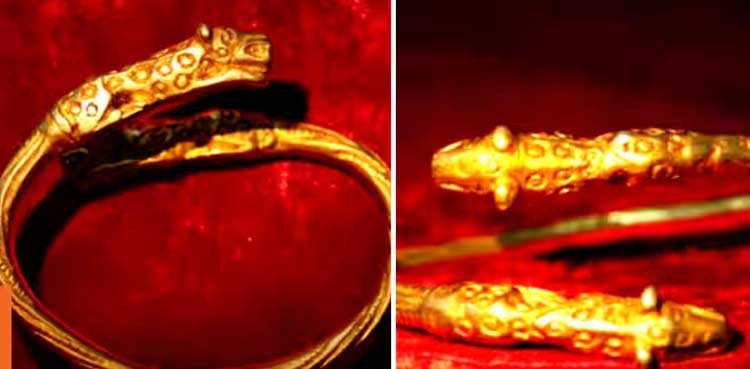Treasure dating back to 5th century BC found in Kazakhstan

ASTANA: Archaeologists in Kazakhstan found a treasure trove of gold jewellery and weapons dating back to the 5th century BC.
The artifacts were found in three burial mounds in the western Atyrau region and are believed to have been created by Sarmatian nomads.
The excavation, led by archaeologist Marat Kasyanov, has yielded over 1,000 artifacts, including around 100 gold ornaments and jewelry made in the Sarmatian “animal style.”
“Images of predatory animals found in the region at that time, such as leopards, wild boars and tigers, can be seen on these objects,” Kassenov said.
These objects feature images of predatory animals such as leopards, wild boars, and tigers.
The discovery includes a gold bracelet weighing approximately 370 grams, as well as pottery, and wooden touchstones with gold handles.
Two human remains were also found during the excavation. The burial mounds, known as “kurgans,” are estimated to have been used for the burial of at least nine individuals.
The findings suggest that the region may have been closer to the center of Sarmatian civilization than previously thought.
The Sarmatians were a nomadic people who lived in the Eurasian steppes from the 5th century BC to the 4th century AD. Their culture is known for its rich goldwork and animal-style art.
The excavation is ongoing, and it is likely that more artifacts and information will be uncovered in the future.
Read More: China discovers world’s largest gold reserves
Earlier, China discovered gold reserves worth 600 billion yuan ($82.9 billion) in the central Hunan province, according to state media outlet Xinhua.
China holds the world’s largest gold reserves and remains the biggest producer, contributing approximately 10% of global gold output in 2023, as per data from the World Gold Council.
In the first three quarters of 2023, China consumed 741.732 metric tons of gold, while its output stood at 268.068 tons, highlighting its reliance on imports to meet domestic demand despite possessing the world’s largest gold reserves.
from ARY NEWS https://ift.tt/awWBDrN

Comments
Post a Comment